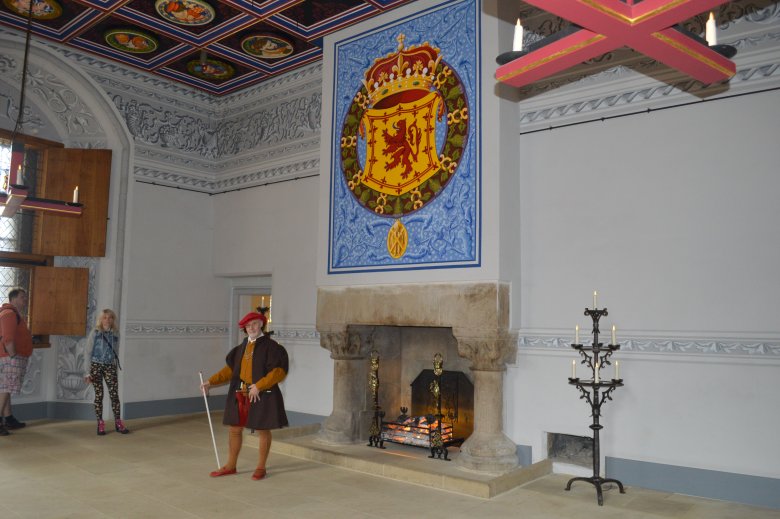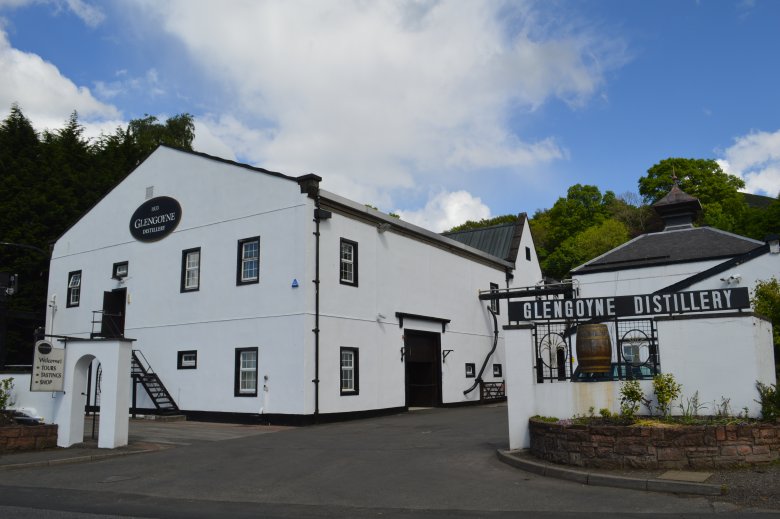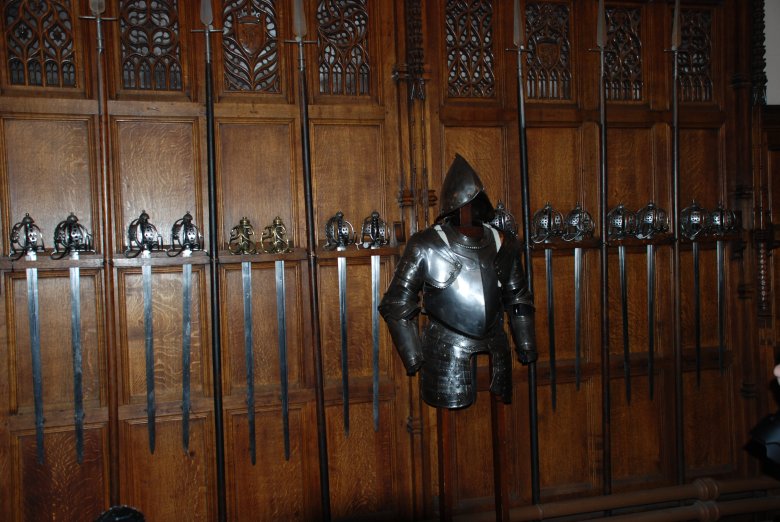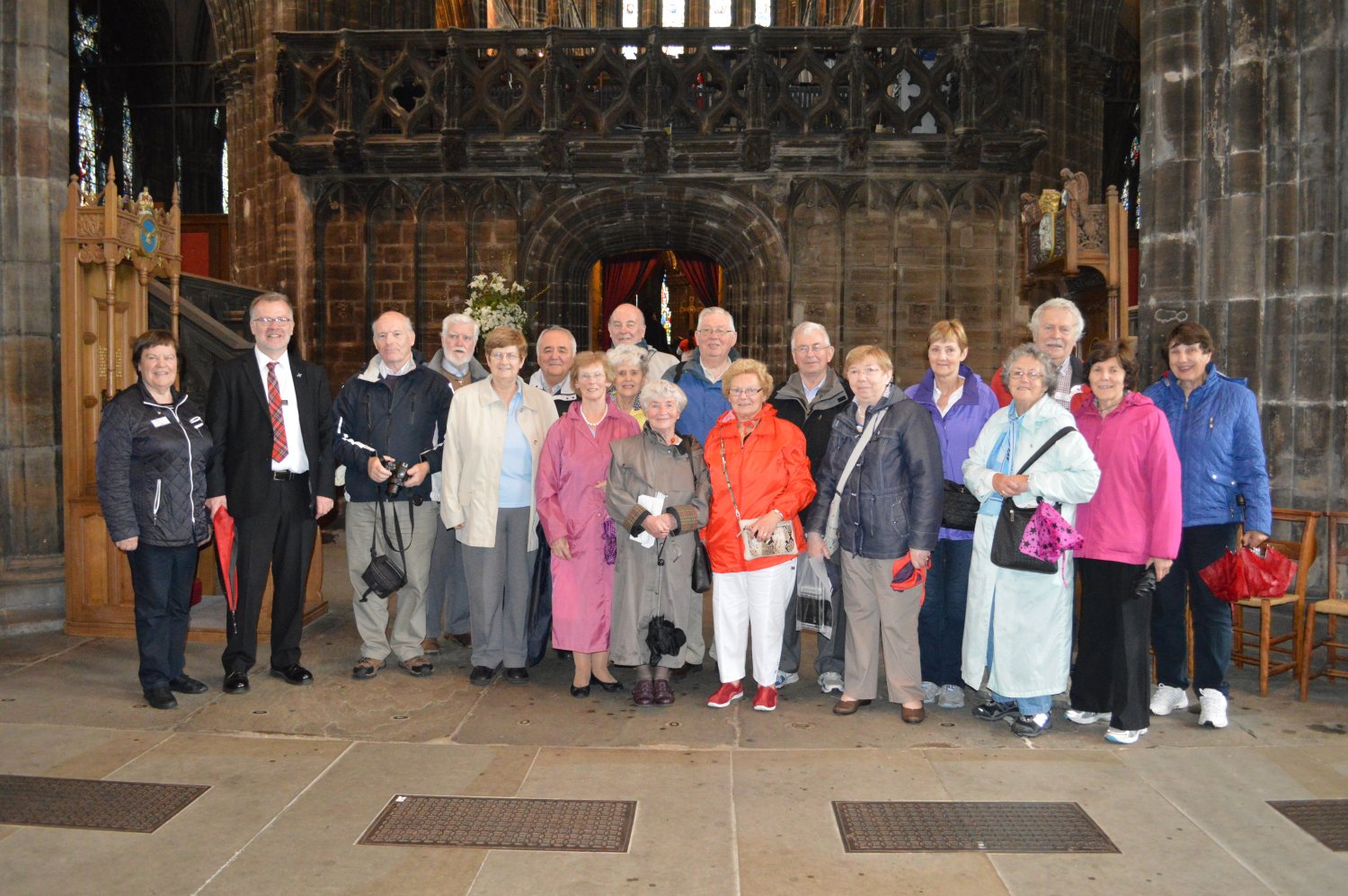Federations visit Scotland – 2nd to 6 June 2014
By Larry Breen
A happy band of fifty historians from all over the island met at Belfast Ferry in eager anticipation of our adventure this year to “Bonnie Scotland”. As in previous years we had a great turn out with representatives from eleven counties and eighteen historical societies.
Counties represented were Dublin, Kildare, Meath, Kilkenny, Laois, Roscommon, Tyrone, Antrim, Derry/Londonderry, Down and Limerick.
Societies present were from Clane, Naas, Tipperary, Rathcoffey, Roscommon, Knocklyon, Rathmichael, Strabane, Carrickfergus, New Buildings, Antrim, Ormonde, West Tyrone, Navan, Foxrock, Fassadinin, Durrow and Lecale.
Monday
After a very smooth crossing from Belfast to Cairnryan we made our way up the Ayreshire coast stopping at Culzean Castle for a short break on our way to Glasgow. This original fortified house has been turned into a mansion of sumptuous proportions and elegance by architect Robert Adam. Although we did not have time to go inside the castle we did see the magnificent building with its impressive grounds and gardens. We arrived safely at our hotel, the Glynhill, in Glasgow and were treated to a most interesting and thought provoking after dinner talk by Marie Davidson assisted by her husband Richard. Marie from the Historical Association, Glasgow Branch talked about the many Statues which adorn George Square in the city centre.
 |
It was what we would call a soft day when we set off for Sterling on our way to visit Stirling Castle. We were not disappointed. A favoured residence of the Kings and Queens of Scotland it turned out to be a building restored to its renaissance magnificence with stunning views of the surrounding countryside and some very friendly guides. One particular feature was the remarkable sculptures decorating the outside walls of James’s V’s Palace. Our next stop was the quaint Glengoyne distillery set in the most beautiful countryside of the Campsie Hills. Friendly guides with infectious personalities and a “wee dram” of their single malt proved a winning combination. Because of the local geography the whiskey is distilled in the lowlands and matured in the highlands as the distillery is divided by the through road. The last leg of our journey took us to the southern shore of Loch Lomond at the picturesque little town of Balloch. Sweeney’s cruiser, the Astina, awaited us and took us on a memorable cruise in the early evening sunshine beyond stately homes and the magnificent Ben Lomond – Scotland’s most southerly Munro. On our inward journey we passed the ruins of Lennox Castle, a place frequented by Mary Queen of Scots, and so ended a magical day.
 |
 |
 |
 |
 |
 |
On a somewhat wet morning we headed for the city of Edinburgh in a light hearted mood regardless of the weather. We were met by our guide Ann Edgar who proved to be a real gem. She took us on a coach tour of this beautiful city and through the old and new towns accompanied by some great commentary. Highlights like the Palace of Holyrood House, the Scottish Parliament, the Museum of Childhood, the National Museum of Scotland, the Caledonian Hotel, the National Gallery and many more come to mind. After an overview of the castle from our guide we were left to explore the castle ourselves where within its walls is said to be contained the history of Scotland. Dominating the city skyline as it has done for over 800 years it lived up to its reputation as the country’s most visited attraction. Home to the Scottish Crown Jewels and the fabled stone of destiny it was bewildering in its sights and attractions including the Governor’s House, Scottish National War Memorial, the Great Hall, the Prison Vaults, St. Margaret’s Chapel and much more. Some people spent the afternoon exploring the city and some made the journey outside the City to visit Rosslyn Chapel. The Chapel proved to be something very special with its extraordinary carvings and such fine detail. Built in 1446 it would be hard to find another building with such a variety of styles and subjects under one roof.
 |
 |
 |
The day started a little wet but did improve along the way. We were joined by another guide, Allan Stephen, for our tour of Glasgow. Our first stop was at St. Mungo’s Cathedral where we were able to explore this impressive building and the some of the surroundings including the oldest house in Glasgow, the Provand’s Lordship. Although we did not get to visit it we did manage to catch a view of Glasgow’s unique Necropolis, the resting place of many of Glasgow’s rich and good from bygone days. Another stop was at the famous Glasgow Green for a photo shoot of the fountain and other notable buildings. Our guide, Allan, conducted us on a coach tour of the whole city including views of the Riverside Transport Museum, The Kelvin Grove Area, the Exhibition Centre, the Science Centre and a drive along Sauchiehall Street among many other attractions. We arrived back at George’s Square and a welcome break for lunch. After lunch we travelled south to the unique Cotton Village of New Lanark now a UNESCO World Heritage Site. The brainchild of Robert Owen it presented a fascinating story of social history which was way ahead of its time. The village has been beautifully restored to its former glory with an abundance of impressive buildings housing the history of the cotton industry and the social life of the community of that time. Set in picturesque countryside it also presented some stunning views including river and waterfalls.
 |
 |
 |
 |
We left Glasgow in the morning on our journey back home and not without a certain degree of nostalgia about our visit. It was a lovely sunny morning as we travelled to the ferry at Cairnryan but not before we made a final pilgrimage to the birthplace of one of Scotland’s most famous sons, Robbie Burns. The birthplace cottage and museum provide a fitting tribute to this remarkable man and are set in beautiful grounds and gardens. We enjoyed the visit which included a fine restaurant, shops and an impressive monument to the writer.
 |



